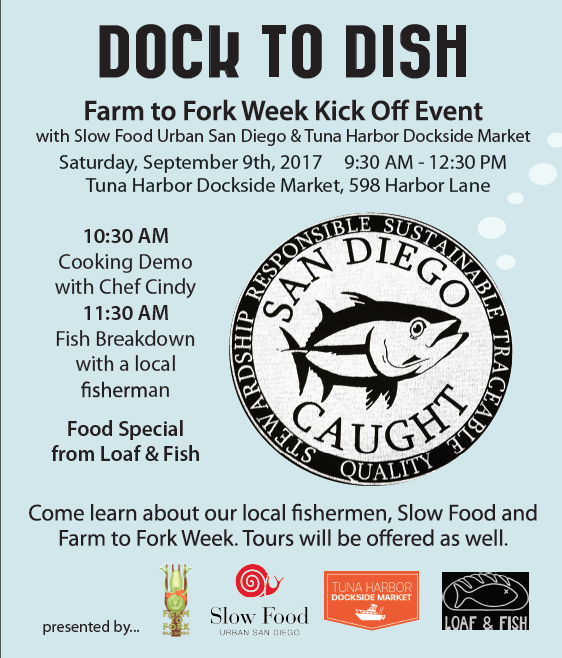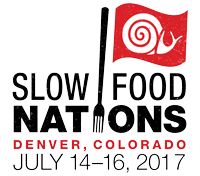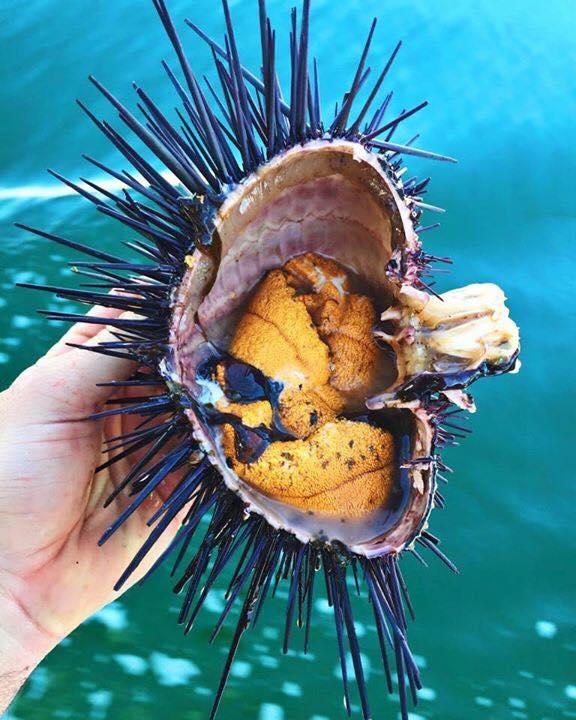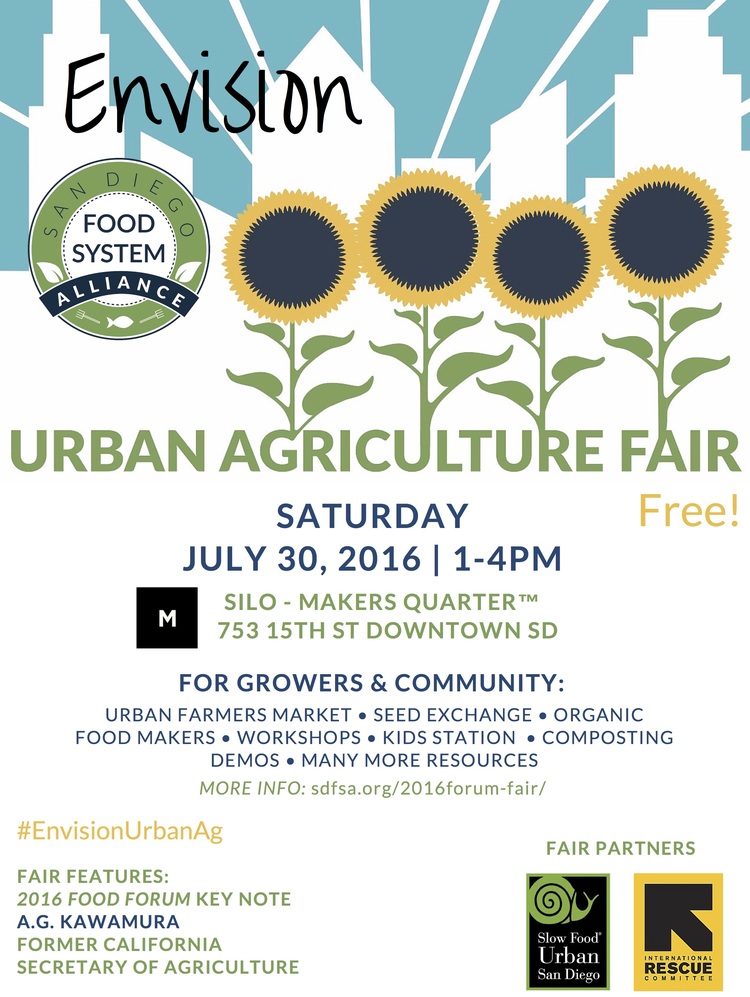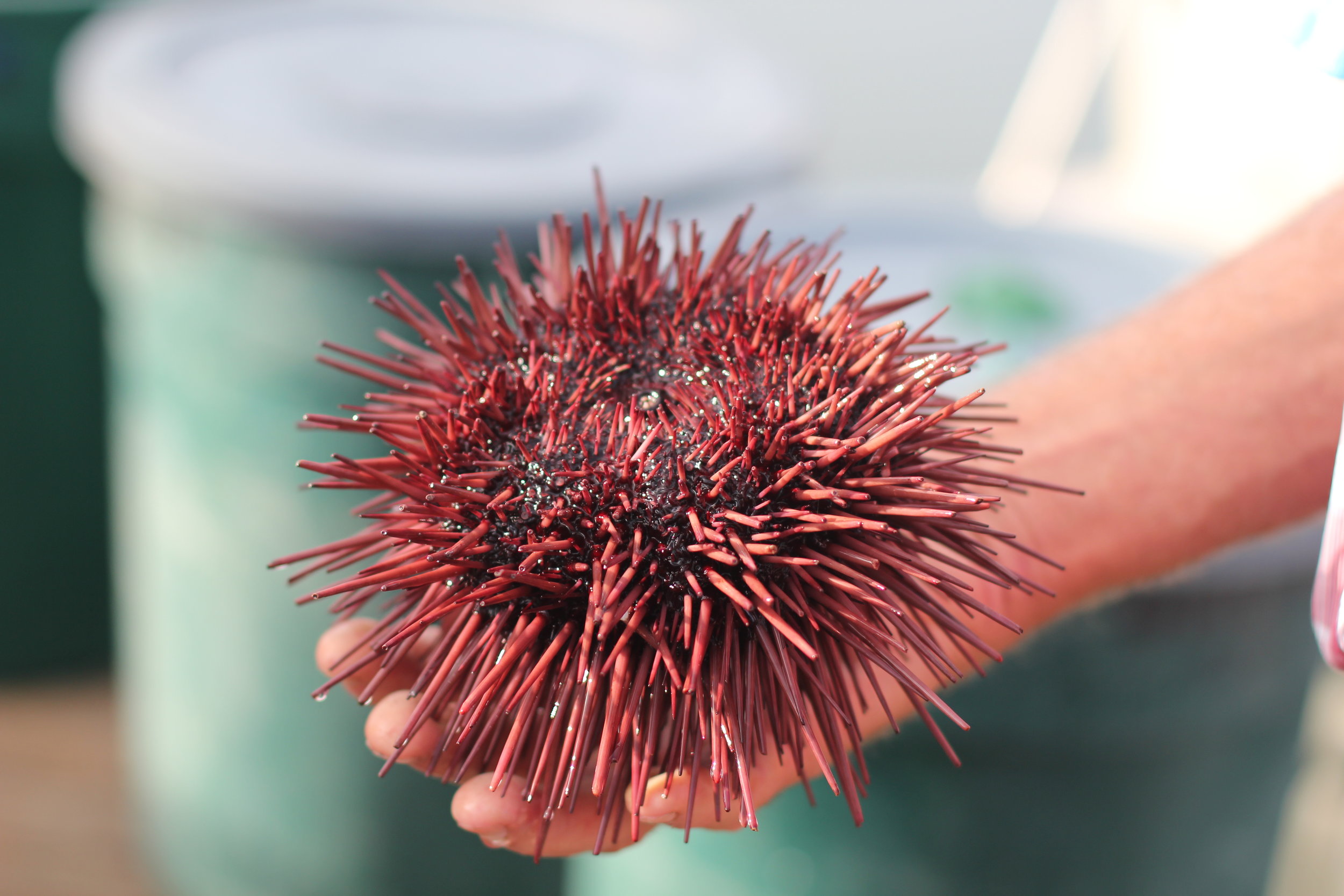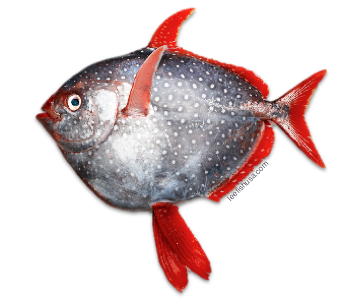Dock to Dish
2017 Good Food Community Fair October 1st @ the World Beat Center
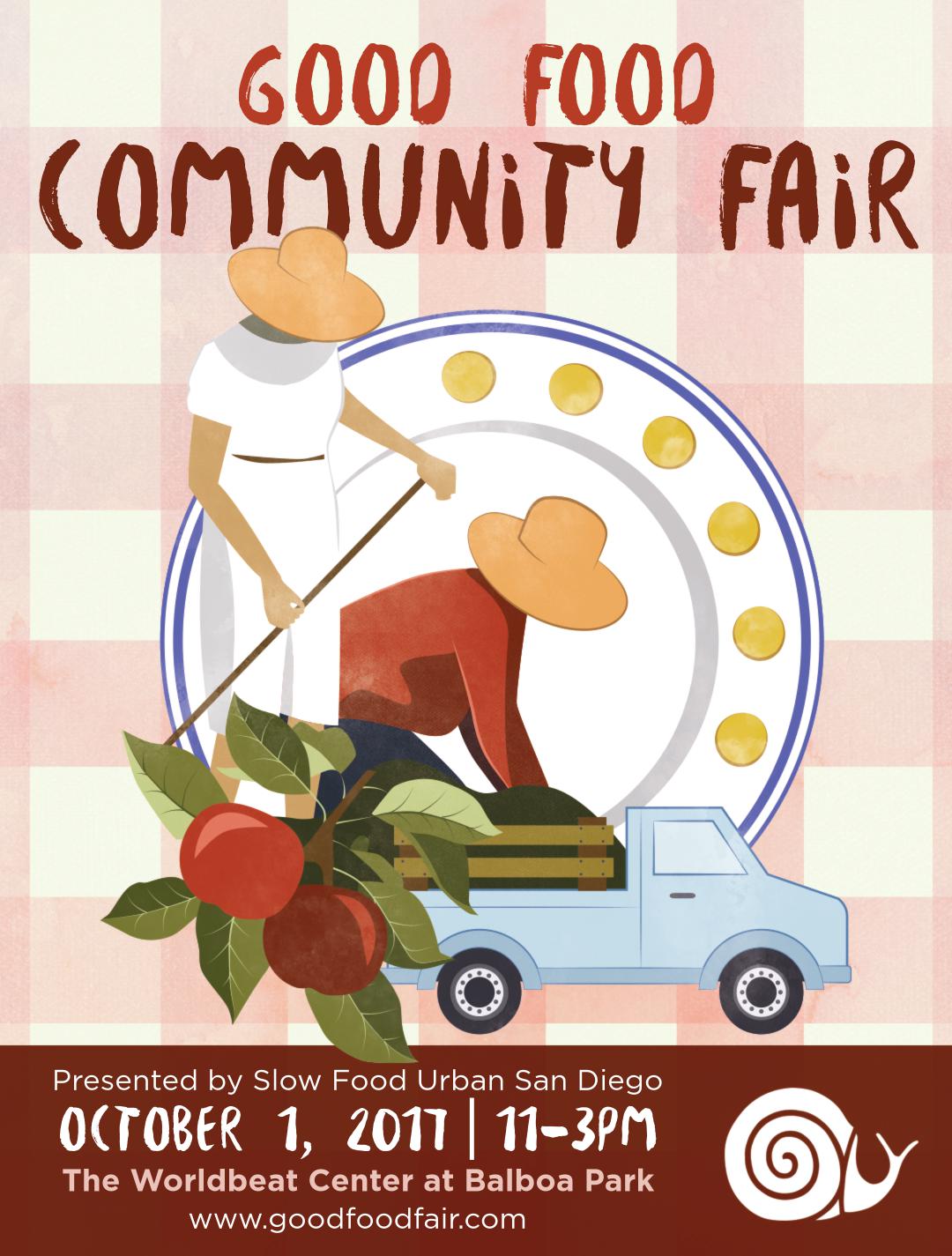
Slow Food Urban San Diego brings together the largest collection of food system advocates in San Diego County: The 4th annual Good Food Community Fair. Come to the Worldbeat Center on Sunday, October 1st from 11am - 3pm as we celebrate all things slow and expand the community table to everyone interested in exploring the Good, Clean, and Fair food movement in San Diego.
The fair is part festival, part conference, part food-stravaganza. Enjoy culinary demos and panel discussions while sampling delicious libations and tasty treats from local food purveyors, tour the first sustainable, edible garden in Balboa park, meet local organizations dedicated to food justice, and learn about the true cost and value of food from some of the most prominent thought leaders in the entire San Diego region.
Programming will highlight and celebrate our community's successes in fair food and ways we can work toward a more just and regenerative food system for all people, animals, and the land.
Food Justice Policy Lead - seeking volunteers

Scholarships to Slow Food Nations
Slow Food Urban San Diego
is pleased to offer up to 2 scholarships for local food system leaders to attend
in Denver, CO on
July 14-16, 2017
. To be eligible, applicants must meet the following criteria:
Applications due no later than
10 p.m. PT
on
June 9th
.
1. Active participant in San Diego's local food system (farmer, fisherman, chef, educator), and committed to good, clean and fair food for all San Diegans.
2. Available to attend Slow Food Nations in Denver, CO for the complete conference (arriving no later than the evening of
July 14th
and staying through the evening on
July 16th
).
3. Committed to working a 2-hour slot at the Slow Food California booth during the conference with a Slow Food Urban San Diego member to share information with attendees about San Diego food system efforts related to your subject matter of expertise. We will help you prepare and connect with others attending.
4. Available to attend a Slow Food Urban San Diego board meeting in late summer/early fall 2017 to share key takeaways from the conference, and committed to attending at least one Slow Food community gathering this fall to share related info to our local food system.
5. Currently involved or interested in getting more involved with Slow Food Urban San Diego committee meetings or other supporting efforts.
Applications due no later than
10 p.m. PT
on
June 9th
.
Scholarship includes reimbursement of up to $1,000 for itemized travel expenses including airfare, lodging, food, conference fees and transportation, all of which much be coordinated in communication with a Slow Food Urban San Diego Board Member. All applications will be reviewed by the Slow Food Urban San Diego Board, and selected applicants will be notified via email no later than
June 16th
.
Meet Your Fishermen
Their days usually start with listening to the weather. And are filled with doing what they love: fishing. Not slave to traffic patterns so much as the winds and currents, they harvest the food we eat in ever changing conditions.
Meet our fishermen on Feb 25th at an evening of local seafood & local wine! Sea bass and box crab caught by San Diego's fishermen and crafted into delicacies by MIHO Gastrotruck Wine produced by J*Brix
Seafood Demonstrations by the pros!
San Diego’s fishermen* harvest a diverse array of species: from swordfish, the most cunning of catches, to sea urchins, the sessile ocean starbursts. From 60+ species of rockfish which most restaurants call snapper to opah, a warm-blooded newcomer on the San Diego seafood scene with three distinct cuts of meat ranging from the fatty belly to the beef-like abductor muscle. Plus albacore, sardine, snails, whelks, black cod, octopus, spot prawns and more. The list of our local abundance goes on.
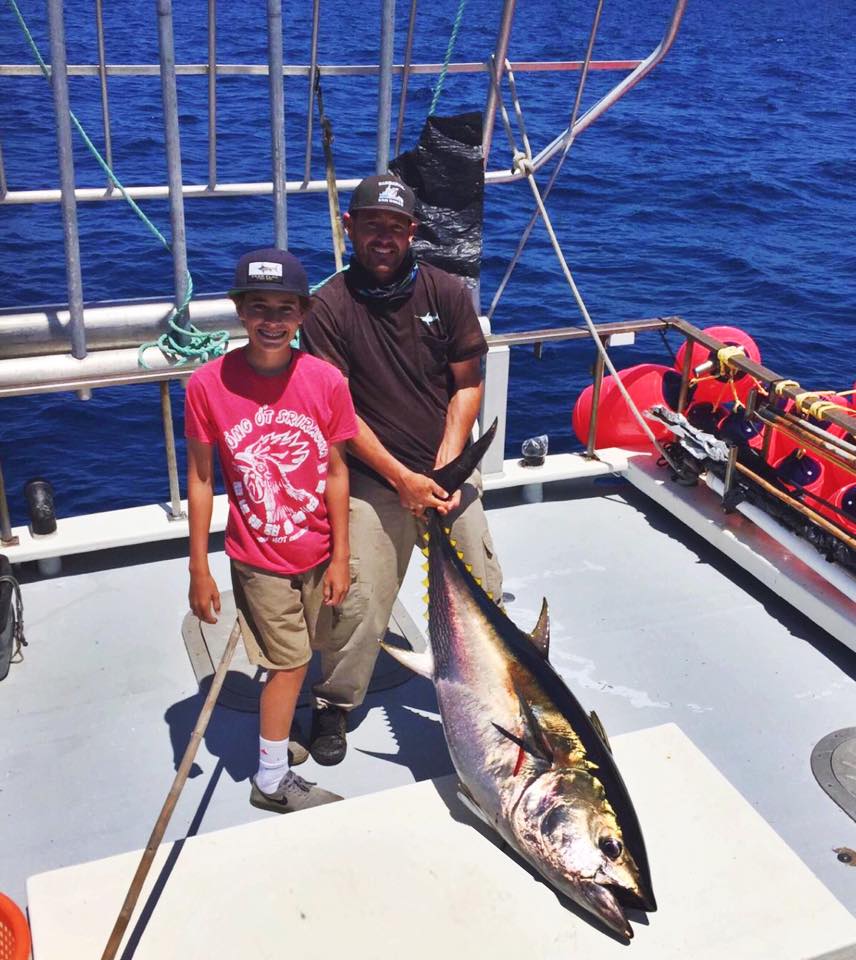
“San Diego is a unique location for the seafood industry in the world. We have a large diversity of year-round species. We have seasonal migrations of pelagic fish. And we have weather that makes seafood available year round.” – Kelly Fukushima, first generation San Diego fishermen.
On Saturday, February 25th, San Diegans have the opportunity to meet some of our local independent fishermen. The folks who chose a life of constant change – weather, regulations and fish availability – to provide our food. Slow Food celebrates these food producers. Box crab demonstrations all night and sea bass breakdown at 7pm.
Kelli and Dan Major Fishing Vessel: Plan B Fishes: Box crab and just about anything available from Point Conception to the Mexico border and out 200 miles – lobster, octopus, whelk, rockfish, bonito, yellowtail…
Kelly Fukushima Fishing Vessel: Three Boys Fishes: swordfish, squid, crab, lobster, seabass, groundfish
Antonio Estrada Fishing Vessel: Caroline Louise Fishes: sea bass, including the one we’ll be eating on Sat
U.S. fisheries are among the most stringently regulated in the world.
“When San Diegans eat seafood from California fishermen, they are making a great choice for sustainable, responsible seafood and they are supporting artisanal fishing families.” – Kelly Fukushima


*Most people who fish commercially, whether man or woman, prefer the term fisherman over fisher, fisherwoman, etc.
And Evening with San Diego’s Independent Fishermen and Small-Production Winemakers
Slow Food Urban San Diego invites you to a Slow Fish & Slow Wine event featuring small-production winemakers and San Diego's independent fishermen. 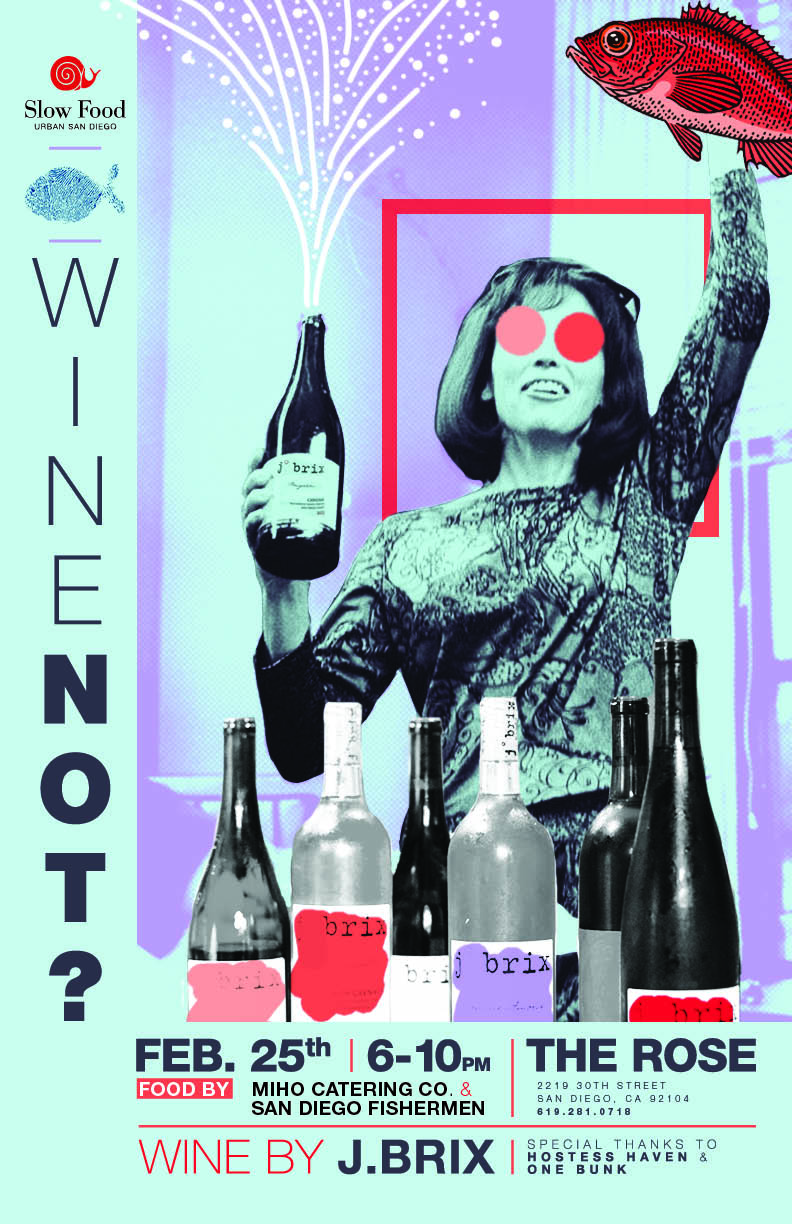 Hometown heroes MIHO Catering Co. will provide sea-to-street cuisine on-site with support from Hostess Haven, who’ll be handling the décor and look of the evening. The night will feature seafood demonstrations by the fishermen who caught the night’s sustainable fish as well as tunes, visuals, and antics provided by the Wine Not? team.
Hometown heroes MIHO Catering Co. will provide sea-to-street cuisine on-site with support from Hostess Haven, who’ll be handling the décor and look of the evening. The night will feature seafood demonstrations by the fishermen who caught the night’s sustainable fish as well as tunes, visuals, and antics provided by the Wine Not? team.
This February 25th, Wine Not?, the L.A.-based event and lifestyle unit of Bon Appétit Wine Editor Marissa A. Ross and event producer Evan Enderle, comes to San Diego in support of Slow Food Urban San Diego and J. Brix Wines.
The event takes place from 6 to 9pm on the 25th. Tickets are $25 and include admission, wine tasting and small bites. Advance purchase is strongly recommended as space is limited. Tickets are available via WineNOT. Proceeds will benefit SFUSD’s programs to promote good, clean & fair seafood in San Diego. The Rose is located at 2219 S. 30th Street and can be reached via telephone at 619.281.0718.
Keep San Diego Seafood Local
14224771_1372011392828140_5510957861613431655_n
On August 24th, stakeholders of San Diego fisheries began meeting with Protea Waterfront Redevelopment about their plans to redevelop the Downtown waterfront. This meeting was important. That the fishing community is meeting at all with the likely developer may affect whether our local and sustainable seafood industry will persist, diminish or flourish in the redevelopment.
Learn more about good, clean & fair seafood in San Diego.
The Port of San Diego envisions redeveloping the “Central Embarcadero” an area that includes Tuna Harbor, where the majority of San Diego's active commercial fishermen dock their boats. “Tuna Harbor is central to San Diego’s cultural history as a fishing community,” says Pete Halmay, San Diego sea urchin fisherman. “It was the hub of San Diego fishing for a 100 years and is central to our local industry today.”
Today, San Diegans have little access to locally-caught seafood, even though we are a waterfront city. The U.S. imports over 90% of its seafood and San Diego fishermen are hard pressed to sell their catch locally. The redevelopment represents anopportunity to invest in our local fisheries and reconnect with our local seafood system. It's up to the San Diego to commit to this.
Want to help? Write a letter to the Port of San Diego in support of local commercial fisheries and sustainable seafood.
14359150_1382307578465188_1120775282404948004_n
While it is still early in the planning process, it is important that we let the Port (and City and County) know now that San Diego wants to support a thriving commercial fishing industry by keeping Tuna Harbor solely as a working fishing harbor. One of the early draft alternatives presented by Protea for Tuna Harbor shows a mixed use harbor, combining fishing with another yacht club. This would reduce the number of slips and total space allocated to fishermen, and create unsafe conditions with little room to maneuver boats and allow for daily boat traffic. Plus, “Creating a mixed-use marina conflicts with the Port Master Plan which delineated this area, among others to commercial fisheries,” says Halmay. The preliminary plan also reduces the size of the on-site processor and sets it back from the water behind retail stores and a taco shop. “Santa Monica Seafood provides vital services to the fishermen: ice, loading dock, crane, etc. We need these things to operate and keep our seafood fresh.” While this plan is only one of several draft alternatives, it reveals the extent to which commercial fishing could again be reduced in San Diego. Setting commercial fishing as a priority in San Diego needs to happen now.
14233075_1379211978774748_5328967778218954587_n
At the 2nd meeting in September, facilitated by Dr. Theresa Talley of SeaGrant California, stakeholders chose Mike Conroy, of the American Albacore Fishing Association, to Chair future meetings. They also presented their vision of Tuna Harbor, which is a single use harbor for commercial fishing vessels only, including necessary infrastructure like cranes, squid pump, freezer and net mending space plus, signage illustrating San Diego's fishing history and present, and an open-air fishermen's market. The vision maintains Santa Monica Seafood and their infrastructure, as well. All intended to support the current and likely future local fishery.
Port-elements
Click here for larger version of fishermen's sketch.
San Diego needs fishermen to harvest our seafood. It’s not much further for us to get to importing 100% of our seafood. The redevelopment of the Central Embarcadero represents an opportunity for San Diego to invest in its fisheries, in its local seafood system, in community. We can make room for more yachts and chain restaurants or we can invest in Good, Clean & Fair Seafood for All. The success of Tuna Harbor Dockside Market, the popularity of restaurants serving local seafood, and the move to eat locally, all point to the potential of our local fisheries.
14317614_1379211968774749_2549422999008196267_n
Maintaining and improving the fishing infrastructure at Tuna Harbor will keep locally-caught sustainable seafood in San Diego. Keep San Diego Local. Support your local fishermen, and fresh, tasty local seafood.
Watch this video to learn more about the value of San Diego commercial fisheries.
Want to help? Write a letter to the Port of San Diego in support of local commercial fisheries and sustainable seafood.
14183824_1373122106050402_6244885381123851264_n
Join SFUSD on August 13 at Suzie's Farm for a Sunset Concert
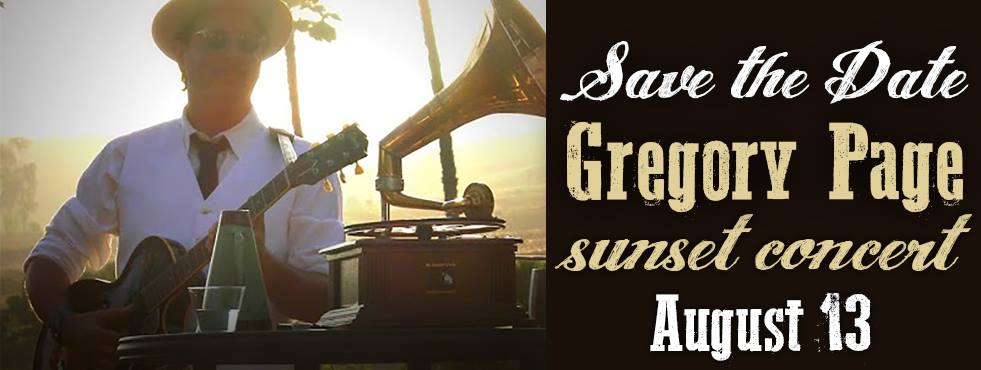 Ready for some summertime fun? Spend a carefree evening at Suzie’s Farm enjoying warm summer breezes, a golden sunset and listening to the dreamy music of Mr. Gregory Page.
Ready for some summertime fun? Spend a carefree evening at Suzie’s Farm enjoying warm summer breezes, a golden sunset and listening to the dreamy music of Mr. Gregory Page.
Suzies Farm is offering a special field tour starting at 3pm as an add-on. This will also ensure you are one of the first in line when doors open so you'll grab a great spot!
Golden Coast Mead will be on tap. This event is partnering with Mindful Fitness. A portion of proceeds will benefit Slow Food URBAN San Diego, so come on out and show your support.
$27 open seating (bring your own chair/blanket) registration in advance $40 reserved seating for picnic tables limited availability
Get tickets here. PLEASE NOTE: No sales at door.
Facebook event page
Join Slow Food and the Food System Alliance this Saturday for an Urban Agriculture Fair!
Save San Diego's Sustainable Seafood
San Diego's sustainable seafood needs your help. San Diego's fishermen need your help. Our good, clean & fair seafood system needs your help.
The Port of San Diego plans to redevelop our Downtown waterfront, but the proposals they are considering, by and large, fall short of sustaining our local fishing industry. You can speak up and let them know that we support our fishermen and need a fishing harbor. No fishing harbor means no local fish. You can do two things to help:
- Send a letter to the Port of San Diego and ask them to support a healthy, local seafood system and a distinctly local Downtown waterfront. More details below.
- Attend the Port of San Diego meeting to review the proposals October 13th. Provide public comment in support of our local fisheries. Details here.
Read San Diego fishermen's Downtown waterfront vision

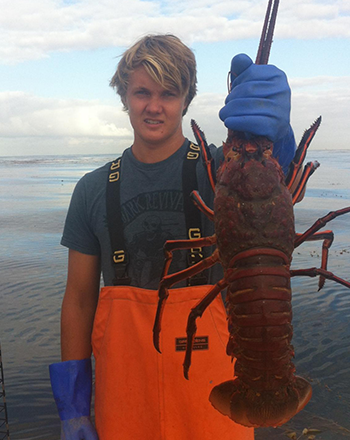
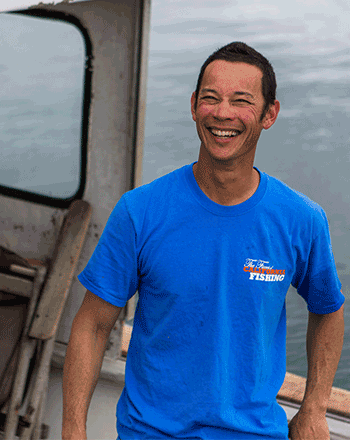
Support good, clean & fair seafood for all San Diegans.
Help maintain our access to some of the most sustainable seafood in the world by sending a letter to the Port of San Diego. Points to include in letters and contact information for Port Commissioners and staff are below and downloadable here.
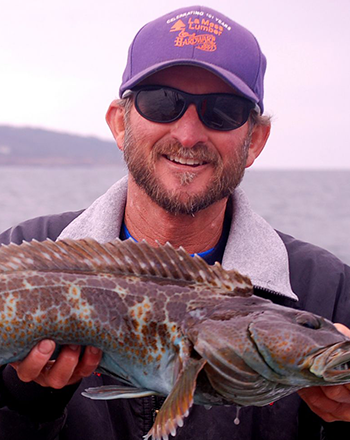
Points to include in letters:
- A world-class community fishing commercial fishing harbor on the Embarcadero is a crucial and beneficial part of the fabric of the waterfront and the San Diego community. Our fishing harbor and the people within provide food security, economic value, legal consistency, and strengthen connections to our history and culture.
- We encourage the Port to work with the San Diego fishing community to ensure that their needs are incorporated into the redeveloped waterfront. Please ensure that San Diego fishing will have the infrastructure, visibility and community involvement it needs in order thrive.
- San Diego fishermen provide food security. San Diegans want access to safe, secure and healthy food. While 90% of the U.S.’s seafood is imported, with most from unknown origins, San Diego fishermen provide a local source of traceable seafood. This seafood is a safe, secure, healthy and affordable option for the community, and is some of the most sustainable seafood in the world.

- San Diego fishermen contribute economic Value. The San Diego fishing industry has an extensive economic value to our community and this should be maintained. The San Diego fishing industry supports 130 commercial fishing vessels, including crew members and their families. In the San Diego area, 2.3 million pounds of seafood were landed in 2014, at a value of $10.3 million. Our commercial fisheries bring other values to San Diego including: networks, stewardship, lifestyle, income, fishing expenses, gifting and trading seafood, culture and tradition, education, spiritual, intergenerational, and transportation.
- The Port should maintain legal consistency. The Port should redevelop the waterfront in a manner consistent with local and State plans and acts that protect the coast and its people and consider proposals for Central Embarcadero development. Redevelopment should meet the requirements of the Unified Port of San Diego Master Plan and the Commercial Fisheries Revitalization Plan to maintain a working fishing harbor at this location; the State Land Commissions Public Trust Doctrine that holds the waterfront in trust for the people of California; and the Coastal Act that states that fishing harbors should be maintained.
- We want to maintain our history and culture. San Diego wants fishing operations in sight. Downtown San Diego is the cultural and historical home of San Diego fishing. Young San Diegans need the opportunity to view fishing and consider it as a viable line of work in order to keep our food sources secure. Once fishing is not visible, it will disappear along with the food security, economic stability, jobs and local identity it provides.
- Please keep our local sustainable seafood system within reach. San Diego deserves a thriving local food system, of which fishing is an integral and respected part. We want access to fresh, healthy, sustainably sourced seafood, that we can afford. A thriving fishing industry in Downtown San Diego is critical to this future.
- Downtown San Diego, like many other downtowns, has its share of large hotels, chain and non-local retailers and restaurants, and a lack of fresh, locally sourced food. Redevelopment represents an opportunity to highlight San Diego’s local treasures and create a beautiful, unique, accessible, and purposeful world-class waterfront.
- San Diego deserves a world-class, working waterfront. To accomplish this, we need a thriving fishing industry. Downtown San Diego can be known for its healthy, sustainable seafood; its strong fishing heritage; and its beautiful, fully operational fishing harbor accessible to all.
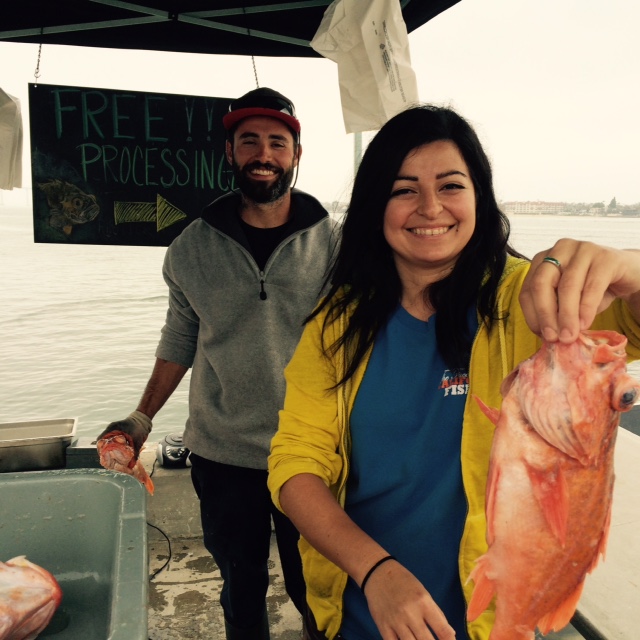
Support food security, economic value, our cultural identity. Support local fisheries.
Email the San Diego Port Commissioners Marshall Merrifield (Chairman)- City of San Diego mmerrifield@portofsandiego.org Robert “Dukie” Valderrama (Vice-Chairman)- National City rvalderrama@portofsandiego.org Rafael Castellanos (Secretary)- City of San Diego rcastellanos@portofsandiego.org Bob Nelson - City of San Diego bnelson@portofsandiego.org Ann Moore- Chula Vista amoore@portofsandiego.org Dan Malcolm – Imperial Beach dmalcolm@portofsandiego.org Garry J. Bonelli - Coronado gbonelli@portofsandiego.org
Email the Port Staff Jim Hutzelman jhutzelm@portofsandiego.org Randa Coniglio rconigli@portofsandiego.org Wendy Ong wong@portofsandiego.org Penny Maus pmaus@portofsandiego.org Sofia Bayardo sbayardo@portofsandiego.org

Seafood Saturdays
 We'll restart our seafood Saturdays tastings in 2017! Stay tuned!
We'll restart our seafood Saturdays tastings in 2017! Stay tuned!
Join SFUSD, Chef Cindy and local fishermen Saturdays from 9-11am at Tuna Harbor Dockside Market to learn about San Diego's local seafood, how to cook it, what it tastes like, where it was caught, and who caught it. Check out our Facebook page to see which Saturdays we'll be there and what's cooking.
Chef Cindy's user-friendly recipes are always delicious and fun. Plus, local fishermen share how they caught the bounty and they might tell you their favorite ways to cook it. If you love seafood or don't know what to do with it, this is for you.
Guest chefs and volunteers wanted. Meet fishermen, learn about local seafood, taste yummy dishes. email: Sarah@slowfoodurbansandiego.
 Sheephead Recipes
Sheephead RecipesTo taste Lime juice, salt and fresh-ground black pepperSteam fillets until just cooked (145 degrees), wrap and refrigerate. Chill completely, at least 2 hours. Flake the flesh off the skin, into a large bowl. Mix with celery, red onion, parsley and lime juice to taste. Continue with one of the preceeding recipes.
Sheephead Louie
Think the “king of salads” aka Crab Louie, a California favorite going back to the early 1900s!
Arrange lettuce on chilled plate. Top with sheephead salad. Garnish with egg, tomato and asparagus. Serve with your favorite dressing. Variations: Use avocado instead of asparagus. Add kalamata or other olives, pitted. Add cucumber and/or radishes, thinly sliced. Sub shredded brussel sprouts for the lettuce.
Louie Dressing
Traditionally a mayo-chili sauce blend, Evening Land president and sommelier Larry Stone kicks it up a few notches with this version.
1 cup mayonnaise 3 tablespoons ketchup 1 tablespoon sweet pickle relish 1 tablespoon fresh lemon juice 1 garlic clove, minced 1 teaspoon Tabasco 1/2 teaspoon Worcestershire sauce 1/4 teaspoon sweet smoked paprika 1/4 teaspoon chili powder Salt and freshly ground pepper
In a bowl, whisk the mayonnaise with ketchup, relish, lemon juice, garlic, Tabasco, Worcestershire, paprika and chili powder; season with salt and pepper. Let stand at room temperature for 15 minutes.
Online at http://www.foodandwine.com/recipes/crab-louie
Optional Seafood Cocktail Sauce Combine sheephead salad with carrot, capers, jalapeno, olive oil and lemon juice in a large bowl. Gently fold ingredients together, being careful not to break up the fish too much. Taste and adjust seasoning, adding salt and pepper if needed. Serve immediately, or chill up to 6 hours. Divide mixture between 8 wine glasses. Optionally serve with your favorite seafood cocktail sauce. Inspired by a recipe from Sheila Lukins of Silver Palate Cookbook fame.





Infused Peach Butter
by Rachel HelmerSFUSD Board Member

The delicious fruits of spring and summer are popping up everywhere. Overflowing in grocery store bins, scattering tables at farmers markets, and if you are lucky, hanging heavily from the branches of trees in your yard. Peaches are one of my favorites and their season seems so short that I like to capture all that sweet summer stone fruit deliciousness and preserve it to be enjoyed well past the sunshiny season. This recipe for peach preserve can be infused with anything you fancy! A few of my favorites are vanilla bean and lemongrass. Try one, or both and enjoy this peachy sweet preserve on yogurt, waffles, and muffins or incorporated into salad dressings and sauces all year long!
Infused Peach Butter
Ingredients Approximately 6 lbs of peaches (or nectarines if you prefer) 3 cups sugar 4 lemongrass stalks, smashed and cut into chunks 2 vanilla beans, split open lengthwise and cut in half ½ cup water 3 tablespoons lemon juice
Making the butter First you need to remove the skins from the peaches. To do this fill your largest pot 2/3 full with water and bring to a boil. While you are waiting for this to boil prepare an ice bath in a large bowl, again filling only 2/3 full with water. Once the pot of water is boiling plop as many peaches as you can fit into the bubbling pot and allow to simmer for 1 minute. Using a slotted spoon remove the peaches and add them immediately to the ice bath to cool for 2 minutes. Once the peaches have cooled you can easily remove their skins, just give the skin a pinch and it should peel off.
If you were unable to boil all of your peaches in the first batch repeat the process until all of your peaches have been simmered and skinned. Using your hands or a knife slice open the peach and remove the pit, cut away any bad spots on the fruit, slice the peach into a few different pieces and place the meat of the peach into a large bowl.
Add to this the sugar, gently combine and then cover the bowl to let the peaches sit and get nice and juicy for 1 ½ to 2 hours.
After a few hours have passed, strain the juice from the peaches into a large pot. Add to this your lemongrass chunks, vanilla bean, and water and bring to a boil. Reduce the heat, cover, and let simmer on low for 3o to 40 minutes or until the mixture thickens slightly. Turn off the heat and using a slotted spoon or a strainer remove the lemongrass from the syrup. Now you are ready to puree everything together. Using your blending machine of choice (vita mixer, blender, or if you have one an immersion blender right in the pot) blend the peaches and the syrup together until smooth.
Add this mixture and the lemon juice back to the pot (if it’s not already there). Stir and taste test, add more lemon juice and sugar if you like, and then cook on medium low until the mixture thickens to the consistency of baby food, about 30 to 40 minutes. If you don’t want to mess with the canning process you can store the peachy butter in containers and pop it in the refrigerator, just make sure you consume it within a few weeks. Otherwise you can proceed with your preferred method of canning and enjoy the peachy goodness all year long!
Seafood Saturdays!

Chef Cindy Quinonez will cook Sweet and Sour Rockfish with Bok Choy and Opah Meatballs (recipe below) this Saturday.
Opah Lampris guttatus (aka moonfish). Opah is a bycatch fish in the tuna and swordfish fisheries off California and around the Pacific Islands. They are available year round, but landings seem to peak from April through August. In 2015, San Diego scientists discovered that opah are warm-blooded fish.
For more information on opah go here.
Lettuce-Wrapped Spicy Opah Meatballs
Spicy meatballs made from ground opah, served on lettuce or other greens with a lime dipping sauce. Variation of recipe of same name from Pacific Flavors by Hugh Carpenter.
Spicy Opah Meatballs: 1 pound ground opah 2 green onions, minced 2 tablespoons minced fresh coriander 2 tablespoons light soy sauce 1 egg 1 teaspoon grated orange rind 3/4 teaspoon grated nutmeg 1/2 teaspoon Chinese chili oil 1/2 teaspoon black pepper 4 cloves garlic, finely minced 1 tablespoons fresh ginger, minced Cornstarch for dusting
Spicy Lime Dipping Sauce:
2 tablespoons Thai fish sauce 2 tablespoons lime juice 2 teaspoons sugar 1/2 teaspoon Chinese chili oil 1 clove garlic, finely minced 1 head Bibb lettuce or other greens* 1 bunch fresh cilantro 20 mint leaves 1/2 cup peanut oil * Baby bok choy leaves, kale, chard, spinach, etc.
Preparation: In a bowl, combine ground opah, green onions, coriander, soy sauce, egg, orange peel, nutmeg, chili sauce, pepper, garlic, and ginger. Mix thoroughly, then rub a little oil on your hands and form 20 meatballs about 1 inch in diameter. Arrange on a lightly oiled plate and refrigerate until ready to cook.
Pull leaves from Bibb lettuce or other greens and cut into 20 pieces about 3 inches square. On each lettuce square, place a sprig of cilantro and 1 mint leaf. Arrange lettuce leaves on a serving platter and refrigerate until ready to serve.
Cooking: To broil meatballs, preheat oven to 550 degrees. Place the meatballs on a small baking sheet. Turn oven to broil, place the baking sheet about 4 inches from heat, and broil meatballs until no longer pink in center, about 3 to 4 minutes. To pan-fry meatballs lightly dust with cornstarch. Place a 12-inch skillet over medium-high heat. When frying pan is hot, add oil. When oil just begins to give off a wisp of smoke, add meatballs and pan-fry them, turning them over in the oil until golden brown and no longer pink in the center, about 4 minutes.
Place meatballs next to lettuce cups on the serving platter. Serve at once, accompanied by the dipping sauce. Each person wraps a lettuce cup around a meatball and dips one end of the package into the sauce.
In a small bowl combine dipping sauce ingredients. Add 2 1/2 tablespoons water and refrigerate. Serves 6 to 8 as an appetizer; 2 as an entree.
Slow Fish 2016 - Building a Better Seafood System
by Sarah M. Shoffler, SFUSD Seafood Liaison
In March 2016, over 200 fishermen, fishmongers, chefs, scholars, activists, students and community leaders gathered in New Orleans for four days of stories, food, art and music. Slow Fish 2016 was glorious. We shared our successes and our challenges in striving for good, clean & fair seafood for all. Sarah tells us more about this event and how San Diegans can apply good, clean & fair values to our seafood consumption.
“The world’s fisheries are in trouble. 70% are either exploited, overexploited or have already collapsed” is what media tells us. This leaves the impression that we manage our fisheries so poorly that we’ll soon empty the oceans of seafood. Not so.

In the U.S. at least, our fishermen are among the most stringently managed. If they catch too many fish or harm protected populations (e.g. dolphins or endangered turtles), we have to do something – shut down the fishery, or change fishing gear, season, location, etc. The number of fish populations overfished in the U.S. is decreasing, not increasing.
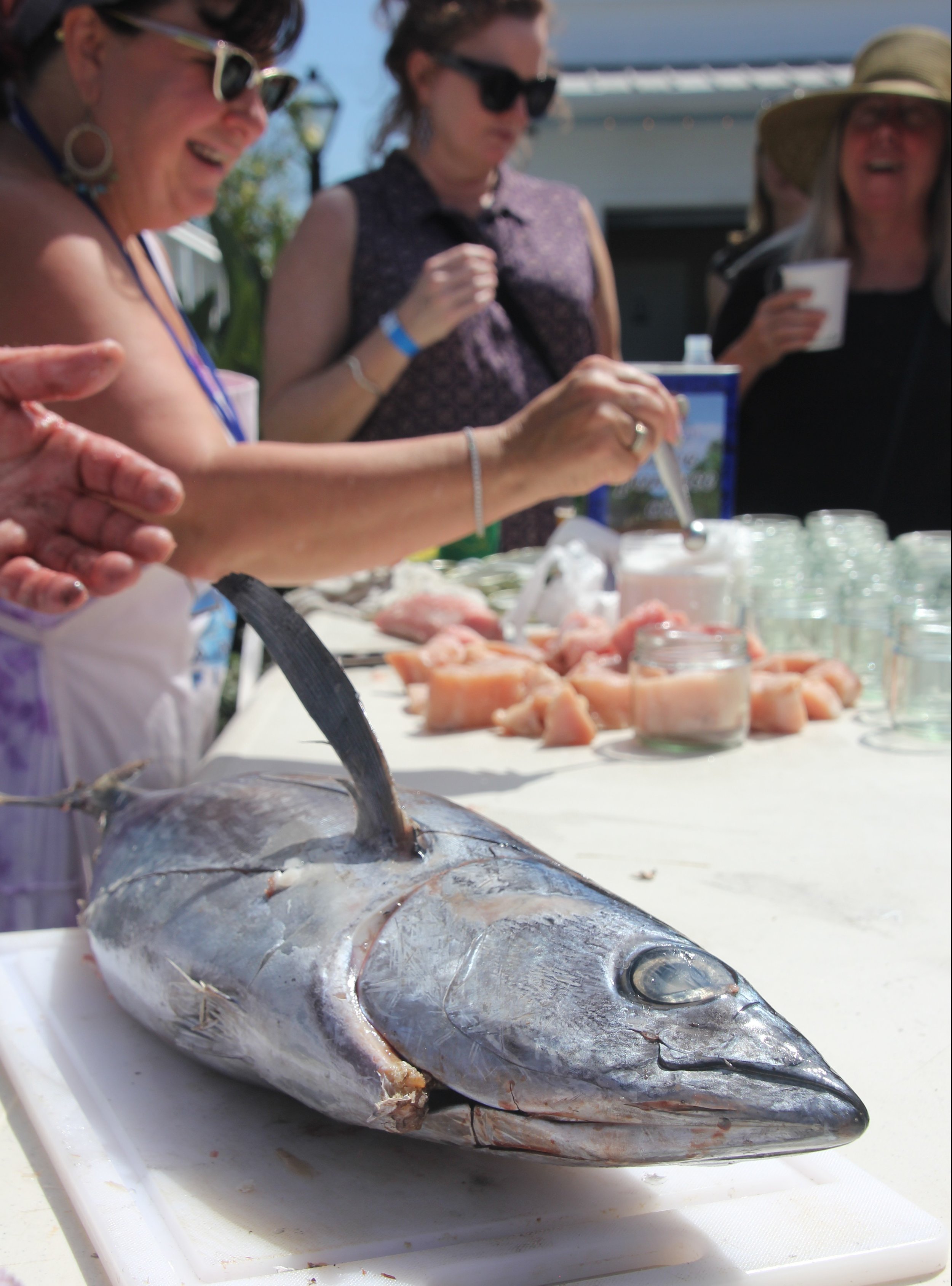
What can we do? How can we wade through the misinformation and support a healthy seafood system? Enter Slow Fish, a grassroots international campaign to promote good, clean & fair seafood. We do this while bringing joy to the efforts to restore marine ecosystems and support fishing communities. That’s a deep order, so how do we do it?

In March 2016, over 200 fishermen, fishmongers, chefs, scholars, activists, students and community leaders gathered in New Orleans for four days of stories, food, art and music. Slow Fish 2016 was glorious. We shared our successes and our challenges in striving for good, clean & fair seafood for all.
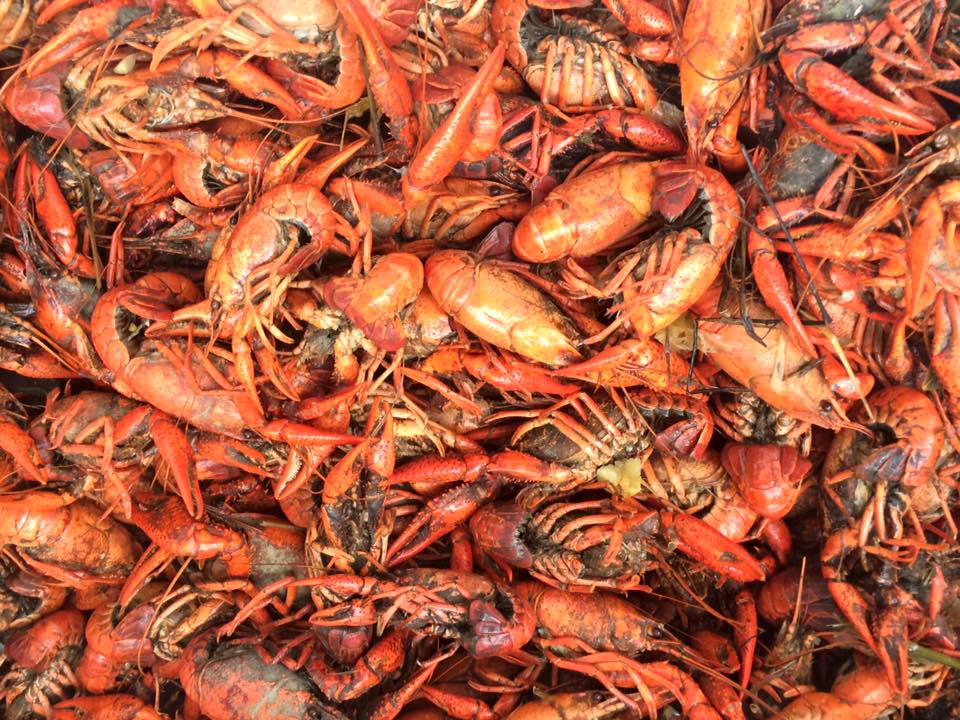
Local attendees included: Sea urchin fisherman and community leader, Peter Halmay, who shared how a fishermen's market in San Diego was created; Chef Drew Deckman of Deckman's en el Mogor, a Slow Fish advocate who cooked and shucked his weight in oysters for us; Scripps Institution of Oceanography student volunteers: Flora Drury, Kate Masury and Catherine Courtier, who's masters projects focus on fishermen's markets, value chains and sustainable seafood; SFUSD member, Eric Buchanan, who volunteered as official event photographer; SFUSD's vice chair and seafood liaison Sarah Shoffler, who was on the event planning team with partners from across the U.S. plus Canada and Italy.

I met family fishermen from Florida to Alaska, who continuously adapt their practices to changing management and ecosystems. They fish in small boats. Or large. They use the most up to date gear with turtle excluder devices and pingers (to avoid dolphins). They fish weirs, fishing gear whose origin dates back to before the emergence of modern humans. They are young – I met a 20 year old woman named Erica from Nova Scotia, who fishes weirs with her father. They are not so young – San Diegan sea urchin diver Pete Halmay joined us and shared his story of starting San Diego’s first fishermen’s market – where fishermen sell their catch directly to the public.
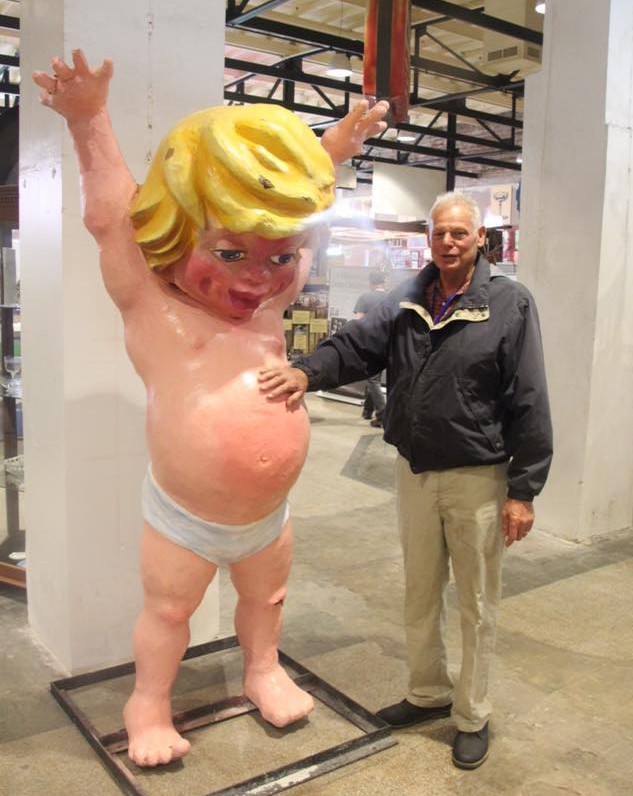
These people love the ocean and what it brings us.
Fishmongers from Moss Landing shared how they started a community supported fishery (CSF) and a “Bay-to-Tray” program where they provide bycatch from the black cod fishery to school lunch programs –animals that would otherwise be wasted. Another fisherman shared his story of building a business where he takes people fishing on San Francisco Bay and teaching them to cook what they eat. We heard so many big and small ways of supporting a healthy food system, one based on good, clean & fair seafood for all.
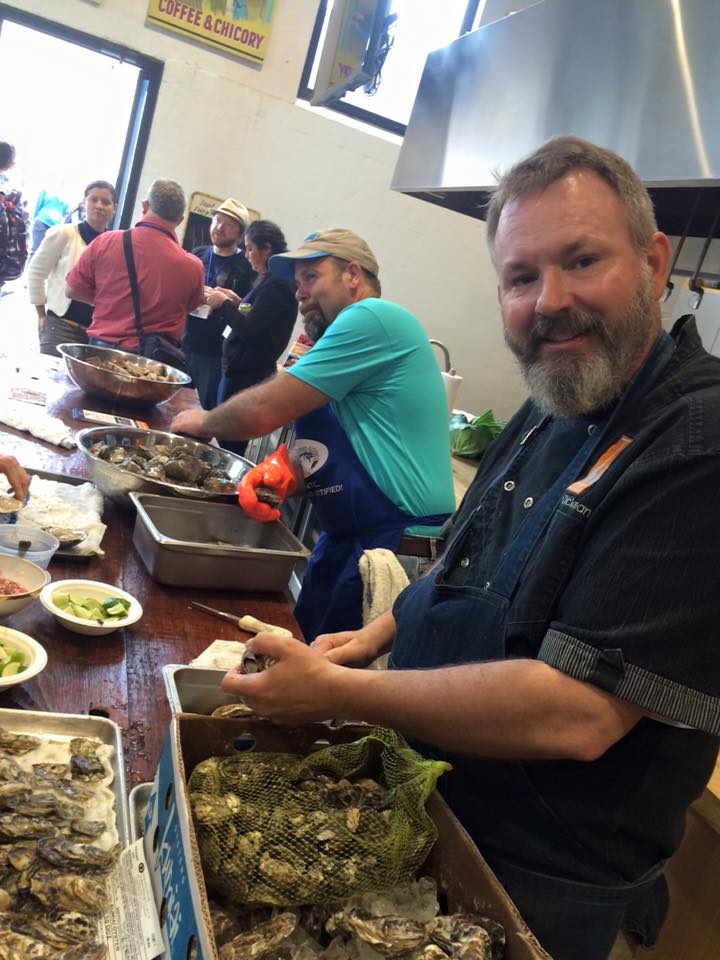
I was buoyed to learn that efforts in San Diego to support our small-scale fisheries are seen as successes elsewhere. And that by supporting local fishermen with my business, I invest in families and the local economy as well as give hope to folks who are so often portrayed as the enemy to our marine ecosystem, when in fact they offer many of the solutions to sustain it.
SFUSD Slow Fish Plans
(1) Now: Connect local chefs directly to local fishermen - this is the best way to get the freshest most sustainable seafood on our restaurant plates. If any chefs would like to meet our local seafood producers, please get in touch.
(2) Soon: Collaborate with local chefs, fishermen, fishmongers and others to bring you Seafood Saturdays - a campaign to promote local US-caught seafood in San Diego and to teach San Diegans how to prepare, cook and enjoy the local bounty. Check us out at the Tuna Harbor pier starting April 16th.
(3) Future: Research barriers to keeping local seafood local. Why is the local catch sent outside the City, County and Country? How can we keep it here? Why should we?
(4) Future: Keep our waterfront a working waterfront. How can we maintain our cultural heritage as a fishing community? How can we revive it? How do we keep the harvest of this healthy and delicious resource in our community?
What’s a seafood lover to do?
- Eat locally-harvested wild-capture fish – you support local families and the local economy
- If you can’t buy local, buy U.S. wild-capture seafood
- Ask how, when and where your seafood was caught
- Try new things – eat a variety of seafoods so we don’t overpressure just one population
- Encourage the Port of San Diego to keep our waterfront a working waterfront – to maintain space for our fishing industry.
- Get in touch with Slow Food Urban San Diego and join our Slow Fish team.



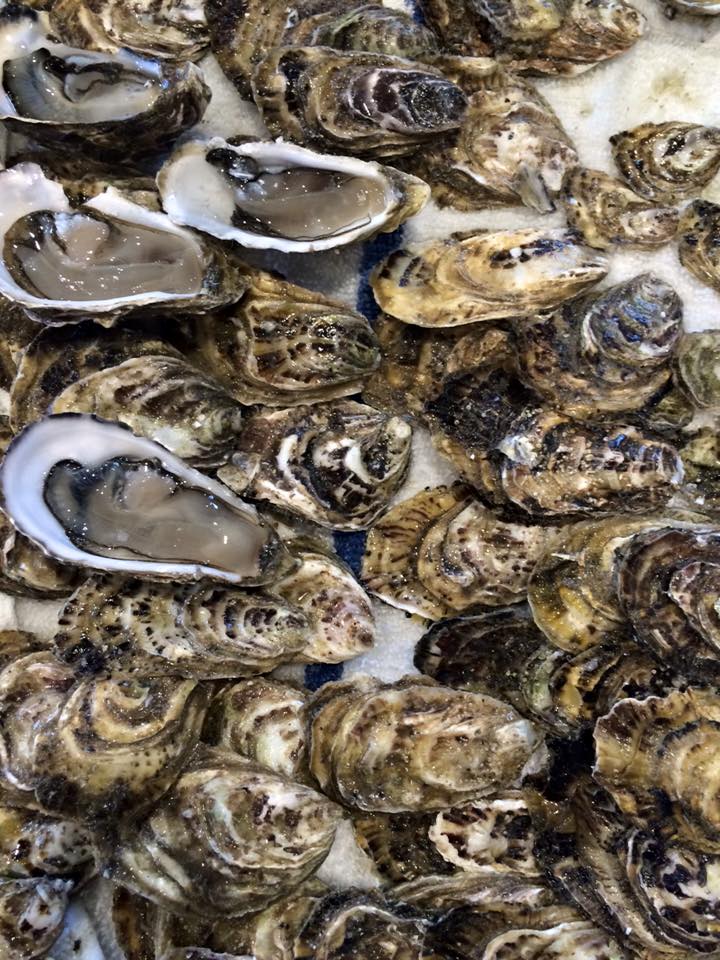



Bringing the Table to the Farm - Deckman's en el Mogor
by Sarah M. Shoffler, SFUSD Board Member

In the heart of the Valle de Guadalupe wine country, up a hillside you’ll find the sensate joy of Deckman’s en el Mogor. Set on Mogor Ranch, this restaurant aims to “bring the table to the farm.” It delivers a Slow Food feast.
The extensive Mogor Ranch and winery grows or produces all the wine, vegetables, herbs, lamb and eggs that the talented Drew Deckman uses in his outdoor-served cuisine. Not only is the food fresh, you get to experience the terroir in which it was grown while you eat it. Sipping Mogor’s wine in the place its grapes were grown and the wine vinted, nibbling produce grown not feet away from where you sit opens the senses to a place. Drew sources all his seafood and other ingredients, from salt to cheese to beef, as locally and as responsibly as possible. He knows his food producers.

This all means that the menu is seasonal, ever changing and made to order. I’m no food writer, but I can tell you his food is delicious, cooked with care and creativity. Deckman is also passionate about oysters. So if you love these bivalves, you’ll find a friend at Deckman’s.

Deckman’s is an outdoor restaurant, sometimes equipped with haybale walls and a makeshift roof, but outdoors nonetheless. It overlooks the Valle. You see wineries for miles from your table. You smell the warmth from the Ranch rising as the sun sets. Deckman, who refers to himself as an ingredient facilitator not a chef despite his Michelin star, cooks on an outdoor grill. He chats with guests as they come and go. It’s altogether convivial. The Ranch dog, Pyrenea, might make a pass through the restaurant for a few scritches if she’s off duty from guarding the flock. All to say, it’s a magical experience rooted in the place.

Slow Food Urban San Diego is pleased to welcome Deckman’s en el Mogor as one of our newest Member Benefit Partners. SFUSD members get 10% off their entire Deckman’s en el Mogor bill. We encourage you to make time to visit the winery, as well.

Deckman's en el Mogor Km. 85.5 Highway 3 Tecate-Ensenada San Antonio De Las Minas, Baja California, Mexico Contact them at mogor@deckmans.com / telephone: 646-188-3960
Board Members Sought
Are you organized, passionate and willing to help with the nitty gritty of accomplishing Good, Clean & Fair? Then we want you! Seeking detail-oriented energetic folks to round out our board. All positions are voluntary. Send a resume or bio and letter of interest to volunteer@slowfoodurbansandiego.org with subject header "Board Application."

Good Food Community Fair Chair Slow Food Urban San Diego is seeking an organized event planner that is passionate about building community around good, clean & fair food for all. The Chair will run committee meetings and organize/manage logistics, fundraising opportunities and special programming for the 4th annual Good Food Community Fair. The Good Food Community fair is a gathering of good, clean & fair organizations and a celebration of local food and craft drinks with cooking demos, art, discussion panels and more. For more information visit: http://goodfoodfair.com/. Also seeking Co-Chair to train up into the position.
Slow Sips March 5th @Tiger!Tiger!
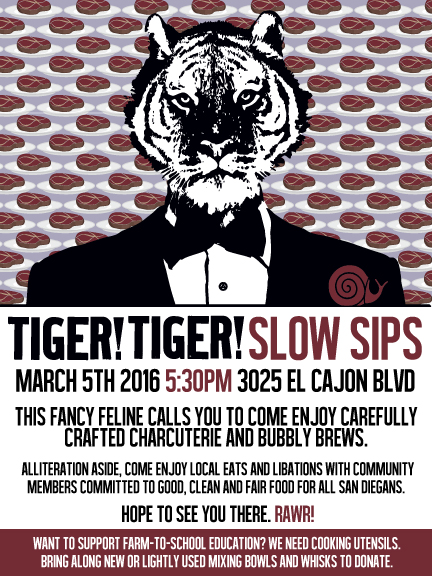 Join us for our first Slow Sips of the year. Meet our board and learn what's up for 2016 in the Good, Clean & Fair Food for All world. Plus, meet the folks behind the meat at Tiger!Tiger! and their friendly bakers.
Join us for our first Slow Sips of the year. Meet our board and learn what's up for 2016 in the Good, Clean & Fair Food for All world. Plus, meet the folks behind the meat at Tiger!Tiger! and their friendly bakers.
But wait, there's more! Light snacks provided and SFUSD members get 10% off food and drinks. RAWR, indeed!
Slow Sips are networking and community-building events put on by Slow Food chapters. It's one of the ways we celebrate food as a cornerstone of community.
Slow Fish 2016 - send a Valentine to a Fisherman
https://youtu.be/jhaCp2dD1s0 Show your love and appreciation for local fishermen by sending them to Slow Fish 2016 in New Orleans this March!
Slow Food Urban San Diego is sending two fishermen. Support the campaign to help send more from around the world!
Slow Fish 2016 will bring together fishermen, chefs and other fishing community stakeholders from around the world to highlight successes and challenges in bringing good clean and fair seafood to all: from changing ecosystems to variable fish stock health; privatization of the public resource to issues surrounding fair price and working waterfronts; and how we can improve access to fresh local seafood.
Best. Job. Ever. Making Slow Wine in a Fast World.
by Sarah Shoffler, SFUSD Board Member
I used to think that “rockstar” had to be the best job in the world. According to Cecilia Naldoni, winemaker at the Grifalco Winery in Basilicata, Italy, I was wrong.
“We do the best job in the world.”

One of four winemakers from Italy touring southern California this month as part of Slow Wine 2016, Naldoni and her colleagues love what they do, despite the difficulties.
Join us for Slow Wine with the Matriarchs on Friday, January 29th.
Slow Food believes that wine, just as with food, must be good, clean, and fair – not just good. Slow Wine supports small-scale Italian winemakers who use traditional techniques, respect the environment and terroir, and safeguard the diversity of Italy’s grapes.
“Slow Wine is how we approach life. It is our philosophy,” says Naldoni. But this lifestyle, this philosophy is not easy to affect. “The difficulty is that our world is going the opposite way, and we have to resist and fight this a lot.”
Sorelle Bronca, whose winemaker Antonella Bronca is on tour, grows their vines on high steep hills in Veneto, where standing can be difficult, let alone farming. Moreover, organic wine, which all four visiting winemakers produce, in general tends to produce lower yields than conventionally-produced wines. Basilicata, where the Grifalco winery is located, is the most mountainous region in Italy, which can’t make farming grapes easy.

While producing the high quality “Slow Wines” that these women make takes sacrifice and work in difficult land, they contend that making wine this way is worth it. The rewards are substantial. “Slow wine rewards not only the wine but also the relationship of the grower with the territory,” claims Elisa Piazza, enologist at Sorelle Bronca in Veneto, Italy.
Angela Fronti of Istine in Tuscany says that the most rewarding part is being able to produce what she loves in the way she loves. “Maybe in the beginning it was difficult to change the mentality of my parents. They are from a generation who produced conventionally. But actually, they are happy now, too,” says Fronti.
“We are a woman company that produces high quality wines and, like people do with women, we pamper our vineyards and land,” says Piazza whose family has been producing wine for three generations. “Wine is the pleasure of life,” she contends.
Naldoni describes the pleasure she has in producing Slow Wine and how the wines themselves benefit. “We are always under the sky, looking up and thinking about our vineyard. We can be responsible, sensitive and manage our grapes as we would a little child, leaving his best peculiarities alive, and just letting him be what he can be, at his best.”
Saluti to letting wine be its best self.

Join us at Slow Wine with the Matriarchs to meet these Italian vintners on Friday, January 29th at The Rose in South Park. 6:30-8:30 pm.
Angela Fronti of Istine from Tuscany Antonella Bronca of Sorelle Bronca from Veneto Cecillia Naldoni Piccin of Grifalco from Basilicata Matilda Poggi of Le Fraghe from Veneto
Taste 8+ wines, enjoy a complimentary aperativo, and chat with four rad ladies making organic wine. $5 from every ticket benefits Slow Food Urban San Diego.
Buy your tickets ahead of time or at the door.



